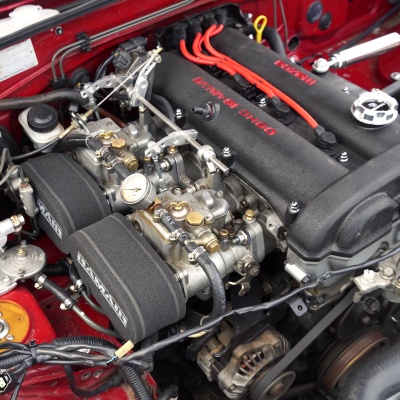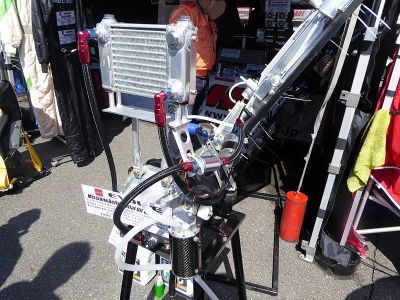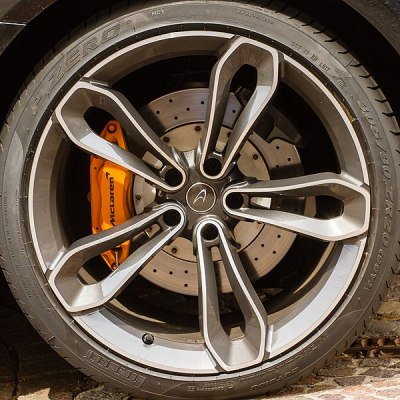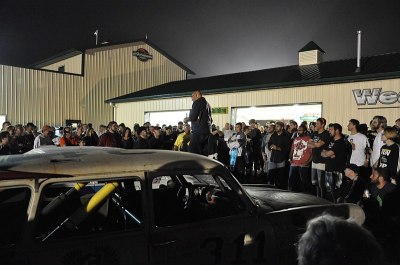Many an automotive enthusiast finds themselves at a track day eventually. Typically, this involves competing against the clock to better one’s laptimes in short sessions throughout the day. Such events are fun, but it often creates a perishing thirst for a greater level of competition.
Regularity and endurance events are often the next step up for a lot of people. These events involve long runs at race pace that stress a car to (or beyond!) the breaking point. Careful preparation is required if one is to see out the race to the chequered flag. Let’s break down what you’ll need to consider.
Basic Racing Stuff

Obviously, if you’re looking to race, you want a car that’s got good power, great handling, and also meets all the safety requirements of your chosen competition. Sometimes, you’ll have to compromise though. Organised racing events typically have strict rules on what modifications are allowed. Some require cars to be near-stock, or only allow basic engine and suspension mods. Others, like the popular 24 Hours of Lemons endurance races, are budget-based.
If you want more power, consider our previous entries in this series. We’ve covered souping up your engine, whether you want to go naturally-aspirated or if you’re looking at a forced-induction setup. However, play carefully in this area. If you want your engine to last in an endurance race, overstressing it to get more power could be the wrong move.
Meanwhile, when it comes to handling, look at our guide to getting the right parts and the right setup for your needs. Also, if you’re on a quicker circuit with some high-speed corners, or you’re just getting really serious, start thinking about aerodynamics as well.

Safety-wise, it’s going to be very dependent on the event you enter. If it’s a regularity event where you’re technically competing against the clock, you can sometimes get away with a fire extinguisher and a helmet. However, any event with real door-to-door racing will likely require a full cage and racing seats and harnesses on top of that.
A DIY roll cage is possible if you’re a professional metal worker, but as these are life-saving devices, scrutineers won’t hesitate to fail a car that doesn’t meet the absolute letter of the law. If you haven’t been trained by someone that’s got years of experience building cages, it’s probably best you leave it to the pros.
Seat installs and other requirements can sometimes be handled by the DIY builder, but follow the requirements religiously. It’s not just about checking boxes, it’s about making sure you survive any incidents on track – whether they’re you’re own fault or not!
Cooling, Cooling, Cooling
The average road car is tested to extreme limits before it goes on sale. Automakers will drive them all over the world, in freezing cold and burning hot conditions. However, those tests are often done at road or highway speeds. They’re still a far cry away from the punishment of repeated full-throttle acceleration and hard braking seen on the track. Endurance racing only ratchets up the intensity, with stints of tens of laps often proving too much for a unprepared vehicle.

The first thing you’ll want to look at is cooling the engine. If you’re building a race car out of an older vehicle, you may find the cooling system is in a poor state of repair, clogged up with goo or otherwise working poorly. Step one is often to service the car properly and make sure it’s in good shape.
From there, you may find that a bigger radiator will help, particularly if you’re competing in hot conditions. This can sometimes require some sheet metal persuasion to fit, but can make a big difference in the system’s cooling capacity. Other mods to help include creating ducting to funnel more cold air to the radiator, or cutting vents to help hot air leave the engine bay.

An engine oil cooler is often the next mod, which can do wonders for keeping an engine going under punishing conditions. Engine oil tends to break down at excessive temperatures, so controlling this is key to surviving an endurance event. An oil cooler consists of a small heat exchanger, often air-to-air, through which oil passes to cool off. However, be careful with installing these. Mess up the plumbing or leave a fitting loose, and it’s all too easy to dump all the oil out of the engine without realizing. Run an engine on no oil and you’ll have a boat anchor in a matter of seconds.
The other major area you’ll want to consider cooling is the transmission, particularly in the case of vehicles with an automatic gearbox. Your average road car transmission isn’t designed to handle full-throttle pulls every few seconds as you whip the car down the straights. Installing an extra or larger transmission cooler can help improve the chances your auto box will survive a full racing distance.
Brakes
Again, this is an area where road car parts can quickly let you down. Do a few hard stops in a road car from just 60 km/h, and you’ll quickly start to see them smoking. Slowing even a light 2500 lb car down puts a huge amount of energy into the brakes, and on a race track, you’re doing that at multiple corners every lap.

Overheat your brakes, and they’ll start to lose their stopping power, which is referred to as “brake fade”. As they get too hot, you’ll find the brake pedal starts feeling soft and sinks lower to the floor. This happens mostly because brake fluid absorbs water from the atmosphere over time. When the brakes get too hot, that water turns to steam, and steam is compressible, unlike liquid brake fluid. Thus, when you push the pedal, some of that force is compressing the steam instead of driving the pads into the rotors to slow you down.
Even worse, getting your brakes too hot can “glaze” the surface of the brake pads, reducing their frictional coefficient and making stopping harder. Alternatively, you might get the rotors red hot, and find they’ve warped after cooling, particularly if you hit any puddles after coming off the track.
In order to prevent these issues, there are several things that can be done. First is maintenance. Fresh brake fluid contains less water, so better withstands heavy track usage without going spongy. Fresh brake pads also stop better than heavily worn ones.
However, if you’re finding your brakes are overheating regularly anyway, you may need to upgrade. The first stage is often getting a set of racing brake pads that work better at higher temperatures. These can be worse for road use when they’re cold, however, so tread carefully.
From there, drilled and slotted rotors which can have better heat transfer capabilities. The slots can also help abrade away any glazing on the pad surface. These holes and slots also help brake dust and hot gases flow away, keeping the rotors and pads cooler and free of detritus that reduces braking power.
Fresh air from a set of brake ducts can also be of great help. Creating some ducts to feed cold air into the front brakes can make a major difference to brake temperatures, improving braking and making components like pads last much longer. Rear brakes are often less of a problem except on heavier or faster cars, as the front brakes do most of the work.
Going further, bigger rotors calipers and pads all have more thermal mass and thus can take more abuse on the racetrack without heating up so much. Oftentimes, budget racers will substitute larger brakes from other models onto a race car in order to provide this benefit on the cheap. Otherwise, “big brake kits” are commonly available from many brands to massively upgrade the stopping power of most vehicles. Bring your wallet though, because these quickly get expensive.
Fuel Systems

The fuel system is another area that is often heavily-dependent on the regulations in a given racing event. However, in the basest of terms, the less often you have to enter the pits to refuel, the more laps you’ll rack up in a given time, putting you ahead of the competition.
Thus, bigger fuel tanks can be of great benefit to an endurance racing car. It’s often an expensive proposition though. Many series demand that any fuel vessels other than the stock OEM tank must meet strict regulations for racing fuel cells. These can cost thousands of dollars, as they’re built to withstand crashes and rollovers without turning the car and driver into a flaming fireball. If you can afford it, great! But make sure the installation is done to the letter, as even a small fuel leak can cause a deadly fire.
Human Factors
Endurance racing isn’t just about the cars, it’s a trial for the humans too. The strain of driving a racing car on track, both mentally and physically, is often underestimated. Lapping a car at high speed for hours on end taxes the body immensely. There’s a reason why top racing drivers do hours of training almost every day of the week.
If you’re just starting out in track events, it’s not a bad thing if you have to pit every 10-20 laps or so for more fuel. You’ll get a break from the hot, noisy and frantic track environment. Your brain can rest from constantly running its motion programs to stay on the track and dodge all the other cars out there. Your muscles will appreciate the pause too.
If you’re not a professional racing driver, swap drivers at pit stops early and often. Staying out there for hours won’t impress anyone if you end up putting your car, or someone else’s, into the wall.
Push yourself too far, and it’s easy to make a mistake that can hurt yourself or others. Keeping your mind and body operating in its peak range will mean a safer and more enjoyable race for yourself and everyone else on track.
Great Times To Be Had

Endurance races are often cited as some of the greatest events in the amateur motorsports calendar. When you’re not in the car, there’s plenty of time to hang out with your fellow drivers and crew, as well as make friends with other teams in the paddock. There’s often great victories to be earned against the odds, too, battling with your fellow wrenchers to get your car back in the race when a hose has failed or a gasket expired.
If you build your car well, or at least know how to fix it when it breaks, you could have an amazing time out on the endurance racing circuit. Know your limits and those of the car, prepare accordingly, and go and enjoy one of the greatest pastimes in all of motorsport!
















The FAQ of the lemon’s site is a lot of fun ! “Don’t you have friends dumb enough to join you… ” hahaha
I wonder if something like that is done in Germany, this is most probably forbidden too, I mean here is everything forbidden… Most of it you can watch it on the Autobahn… live !
“2.2.1 Drivers Under 18: Drivers under 18 years of age must get a notarized letter of permission from their parents or legal guardians and signed waiver. You might also want to ask said parents or legal guardians why they’d ever allow you to do this; it probably means they’ve been poaching your college fund.”
Lots of enjoyment reading the Rules!
I’ve heard of the “Carbage run” held in some European countries. It’s more a road rally than an endurance race, but it sure looks like a lot of fun.
Warning that in the UK, timing on track days is a definite no-no. Insurance related, I believe.
If there was ever a place that knew how to take the fun out of it…..
Not rally – if you time people, they start racing.
If they start racing, things get out of hand quickly.
Track day setups are not run to the same standard as official race meets, so you’re gonna have a bad day.
Sort of – timing yourself is absolutely fine, but if the track officials are timing *everyone* and posting times, it starts to look an awful lot like *racing* rather than a *track day* and hence brings different rules & regs, and a different view taken by your insurance company…
That said, very few insurance companies will be insuring you for track days OR racing, or even anything else you do to your car away from the public highway.
It’s not ruining anyone’s fun, there’s lots of cheap race series out there that are run under proper MSA regs – and those regs (and safety marshals, and ambulances) are there for good reason.
Drilled rotors are a gosh darn scammy scam.
“Increase heat transfer” gosh darn they do! Just not in the right direction. Oops.
Cracks propagate from the holes too.
How to get into cars…
1. Push “Unlock” button on key fob.
2…
I’ve been working on my vintage sportscar trying to improve engine cooling because it gets to over 40C here pretty frequently in the summer. I spent a bunch of time making a diverging duct that matches the face of the radiator so it gets higher pressure air, and then a friend who races a lot pointed out that the problem is often the air pressure on the back side as there isn’t a good place to get hot air _out_ of the motor area. His advice was a belly pan that ends just before the firewall to form a venturi type extractor with the fast air moving under the car and evacuate the engine compartment that way, which I thought was really interesting.
My car weighs under 800kg and the stock version had unvented rotors: they’re merely solid chunks of cast iron. Unfortunately they’re also too skinny to get as vented rotors, so in order to get cooler rotors I need to substitute ones more than 5mm thick and also swap calipers to match. That sounds like work! But without vented rotors I’m not sure cooling ducts to the rotors do all that much.
See if you can put a few washers on the hood hinge to raise it up so that the air can come out the back of the hood and see if it helps before you put in tons of work for a belly pan :)
Need 2 to 1 or 3 to 1 on exhaust to intake size for best cooling! That’s all openings on front compared to all openings that can remove the heat from around engine.
A minor point. Do not drill your brake rotors. It reduces surface area and makes them more likely to get too hot. It is much preferred to add ducting to the rotors and use racing brake flued. AP570 Motul 600 etc.
By all means, make your brakes physically bigger. This is what big wheels with low profile tires are for: maximum room for the biggest hunk of metal and calipers you can get to fit in there.
” An oil cooler consists of a small heat exchanger, often air-to-air, through which oil passes to cool off.”
Hmm. How does an air to air *oil* cooler work?? I think you meant air-to-oil.
With these cars, the oil probably has leaked out!
B^)
(Actually, the rules say if the car (or driver) is leaking any fluids, it can be black flagged!)
I wondered that too, but it’s not the first time I’ve heard of an oil cooler being described as an “air to air” design. I assume there’s more to the term than the surface meaning.
Folks in the US who are curious about amateur endurance racing should check out the Champcar (formerly ChumpCar) series.
“24 hours of Lemons” :) :)
I’m somewhat surprised that there is a $500 maximum car value for entry.
It has been a long time since I’ve seen a car price that low!
(And to enforce it, any judge can buy a winning vehicle for $500-$600)
(the junkyard bought my old vehicle for $284 10 years ago).
Back in high school (~45 years ago) I had a classmate that bought cars for $25-$50 every few weeks and would sell them off or junk them a short time later. So, I suppose (with inflation) such cars can be had today…